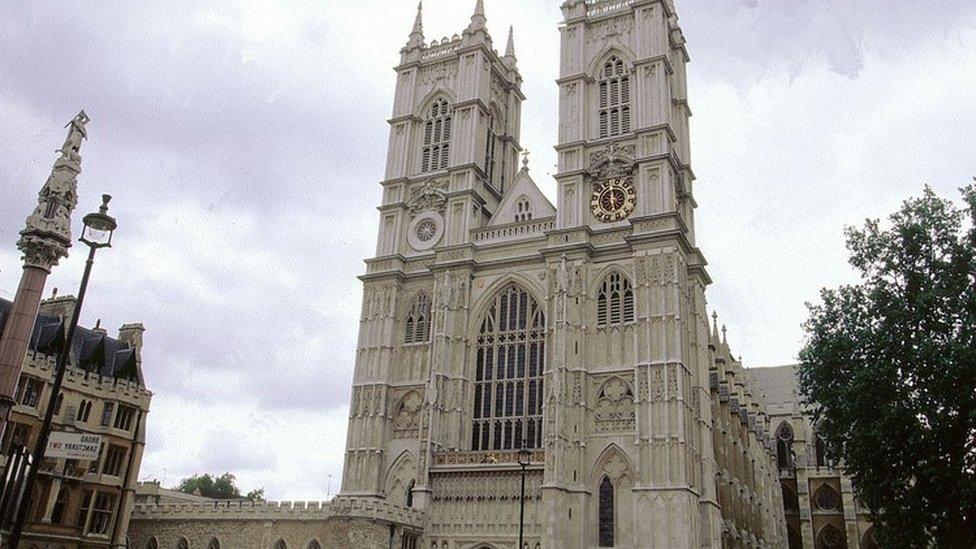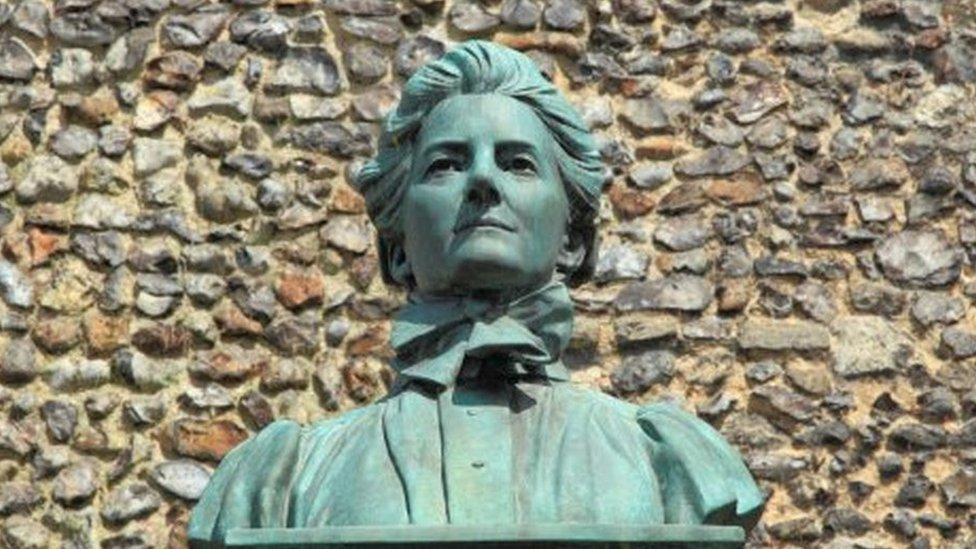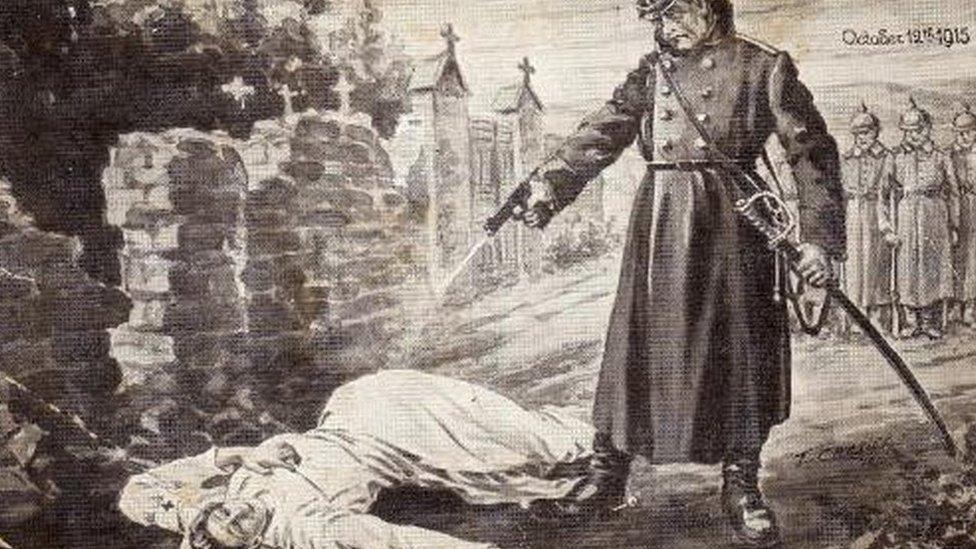Edith Cavell: WW1 Norfolk nurse honoured at services
- Published

Nurse Edith Cavell was executed by a German firing squad in 1915
Two commemorative services to honour war heroine Edith Cavell have been held, 100 years after her body was returned to England.
The Norfolk nurse is credited with helping 200 British soldiers escape occupied Belgium during World War One.
She was executed by a German firing squad for treason in 1915.
Services were held at Westminster Abbey, where a service was held for her in 1919, and also at Norwich Cathedral, where she is buried.

A service for the nurse was also held in 1919 at Westminster Abbey
The Dean of Norwich, the Very Reverend Jane Hedges, led the Westminster service and said it was Miss Cavell's "faith in Christ which inspired all her actions and which upheld her during her time of solitary confinement in prison".
She said Miss Cavell would be amazed by the "fact thousands of people turned out to line the route as her coffin made its journey first by train and then by gun carriage through the streets of London".
Nurse Cavell, who was born in Swardeston in 1865, nursed soldiers from both sides of the conflict in Belgium.
Just before she was taken out for execution she handed a message to the Rev Stirling Gahan, external, Anglican chaplain in Brussels in which she wrote: "Standing as I do in view of God and eternity, I realise patriotism is not enough, I must have no hatred or bitterness towards anyone.

Who was Edith Cavell?

The memorial to nurse Edith Cavell outside Norwich Cathedral
The eldest child of a village parson, Edith Cavell, external was born in 1865 and grew up in Swardeston, Norfolk
She entered nursing at the age of 33, and worked across England before travelling to Brussels in 1907 to help run a new nursing school
During her care, Cavell helped 200 British soldiers escape to Holland
She was arrested by German police and sentenced to death for treason
Miss Cavell was executed at dawn on 12 October, 1915 and her body returned to her home county

- Published22 October 2017

- Published12 October 2015
